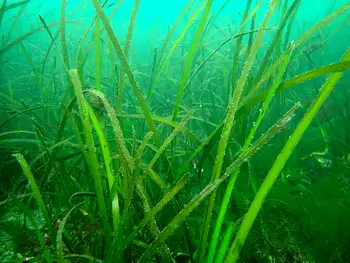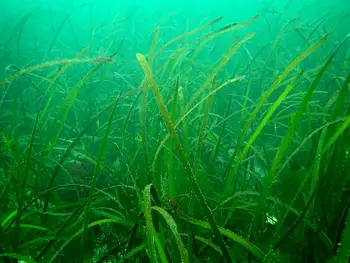Taxonomy
Plantae Tracheophytes Angiosperms Monocots Alismatales
Z. Zostera marina
EelgrassMarine Girdle Girdle-like
Zosteraceae (one of the four seagrasses families, Kubitzki ed. 1998) is a family of marine perennial flowering plants found in temperate and subtropical coastal waters, with the highest diversity located around Korea and Japan. Most seagrasses complete their entire life cycle under water, having filamentous pollen especially adapted to dispersion in an aquatic environment and ribbon-like leaves that lack stomata. Seagrasses are herbaceous and have prominent creeping rhizomes. A distinctive characteristic of the family is the presence of characteristic retinacules, which are present in all species except members of Zostera subgenus Zostera.
Zosteraceae. Retrieved November, 05 2021, from en.wikipedia.org/wiki/Zosteraceae.
Zostera marina is a flowering vascular plant species as one of many kinds of seagrass, with this species known primarily by the English name of eelgrass with seawrack much less used, and refers to the plant after breaking loose from the submerged wetland soil, and drifting free with ocean current and waves to a coast seashore. It is a saline soft-sediment submerged plant native to marine environments on the coastlines of northern latitudes from subtropical to subpolar regions of North America and Eurasia.
Zostera marina. Retrieved November, 05 2021, from en.wikipedia.org/wiki/Zostera_marina.
Similar Species


